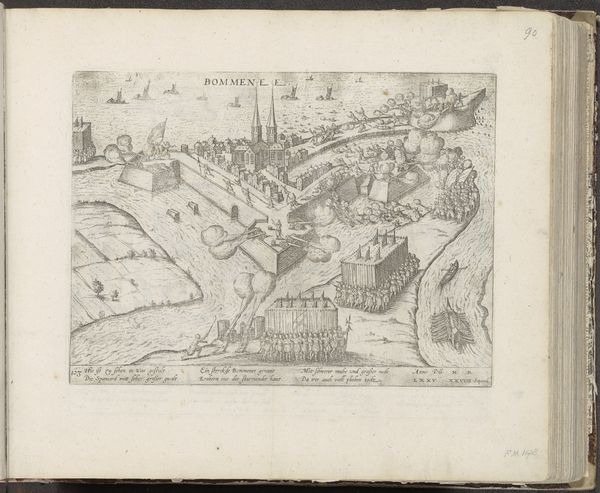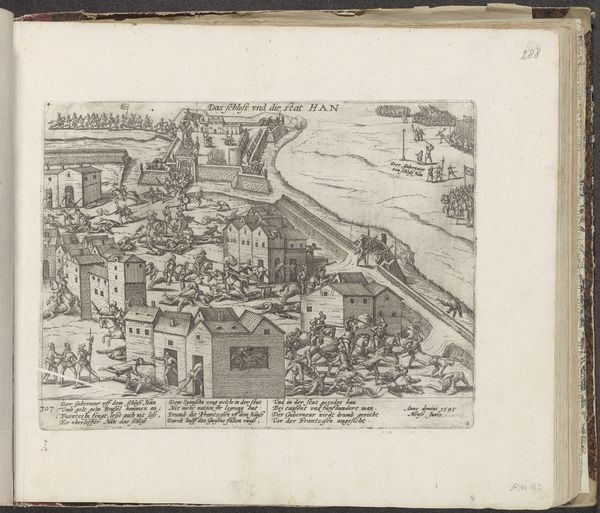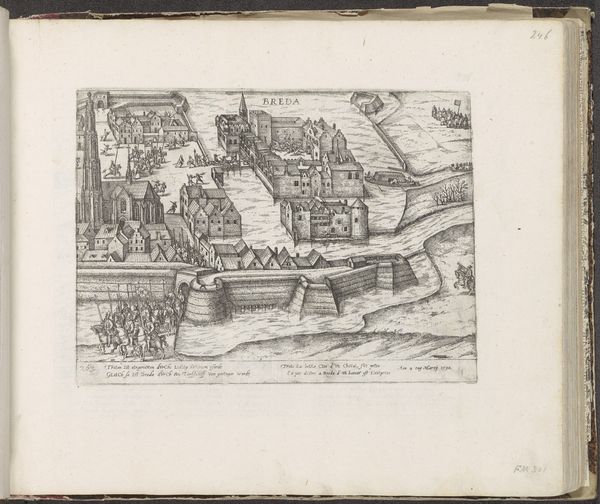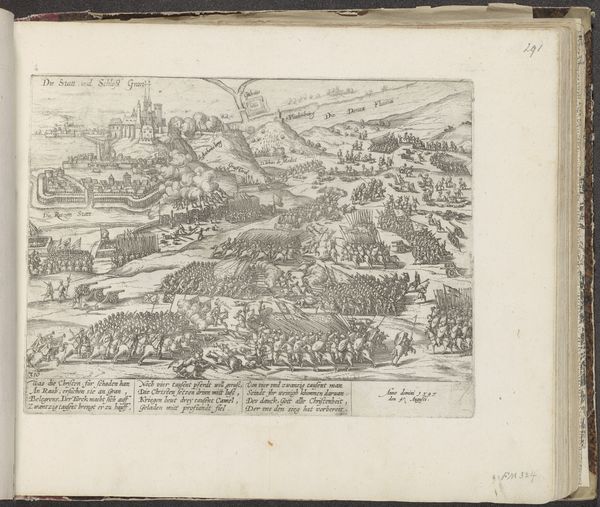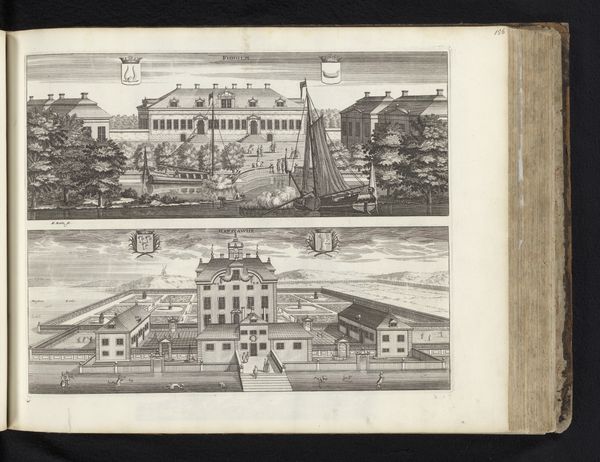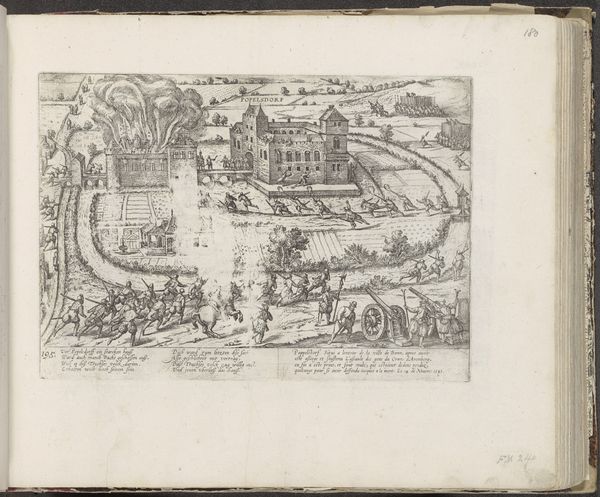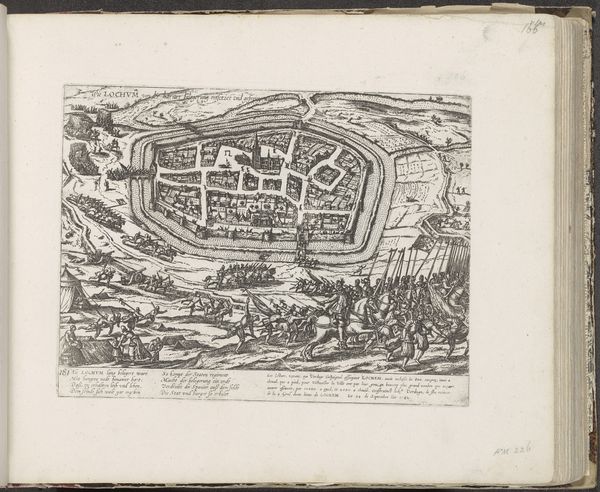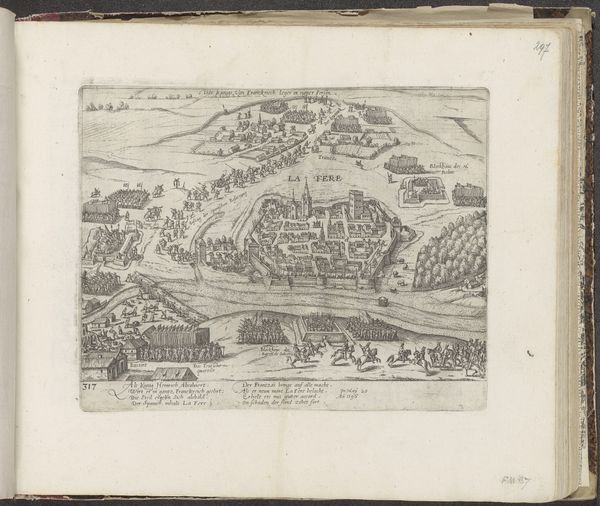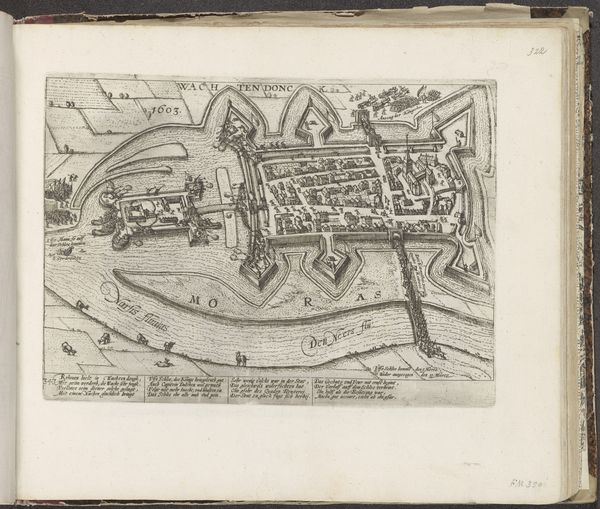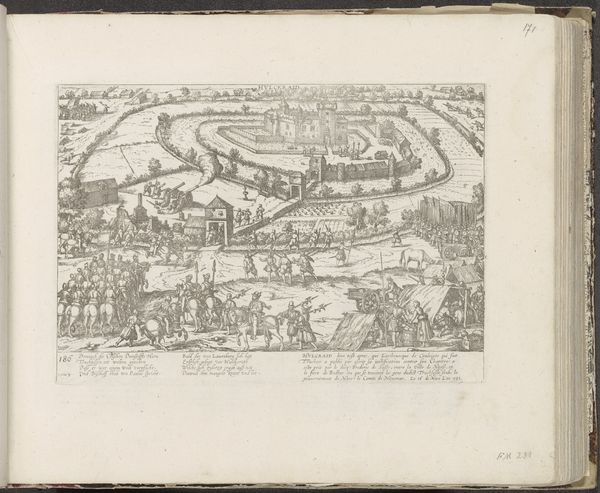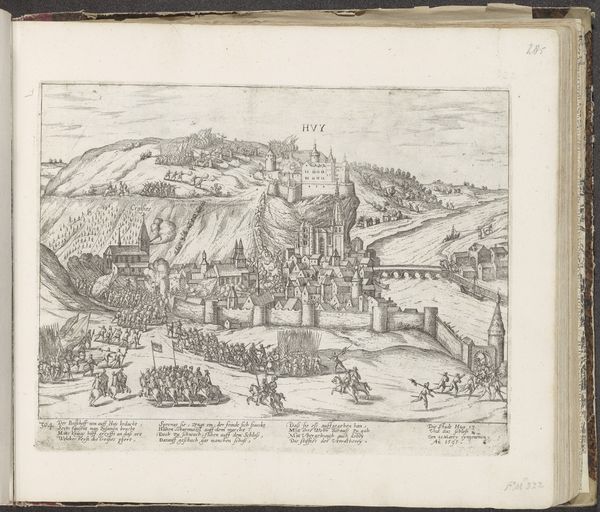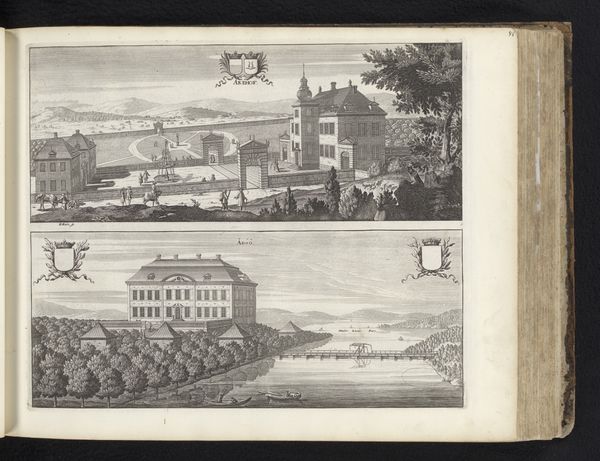
print, engraving
# print
#
landscape
#
cityscape
#
history-painting
#
northern-renaissance
#
engraving
Dimensions: height 215 mm, width 277 mm
Copyright: Rijks Museum: Open Domain
Curator: Here we have Frans Hogenberg’s print, “Hoofdman Biel te Kerpen opgehangen, 1579,” dating from around 1581-1585. Editor: My first impression is one of violence set against an otherwise orderly landscape. The composition seems almost clinical in its depiction of chaos. Curator: It is quite striking, isn’t it? Note how Hogenberg uses the graphic language of printmaking to convey a scene of immense social and political upheaval during the Dutch Revolt. The intricate lines and sharp contrasts capture the gravity of the event. Editor: Precisely, but look closer—Hogenberg wasn't merely interested in accurate representation. The scene is propagandistic; notice the level of detail afforded to the weaponry and the execution itself. The artist attempts to offer a warning to any would-be revolutionaries. Curator: Indeed. We can certainly consider how this image functions as a form of historical documentation, or rather, a Northern Renaissance visual document— but one carefully composed and curated by the artist. See the sharp delineation of forms, typical for the period, that gives clarity to the narrative elements? Editor: The choice of a cityscape is no accident either. The city looming in the background reminds viewers that the stakes are much larger than the fate of a single individual; we're dealing with power struggles that touch upon everyday lives. Hogenberg’s style serves the function of portraying a wider political theatre. Curator: Also the composition. Look at how the linear perspective draws the viewer’s eye from the foreground, where the execution takes place, to the distant landscape. Hogenberg guides our gaze deliberately. Editor: And the engraving itself, its black-and-white starkness amplifies the brutal, uncompromising message. There is little room for nuance here. It all points to power, punishment, and ultimately, social control during a volatile time. Curator: Absolutely. Looking closely at the artist’s technique and aesthetic choices really brings the scene and its historical meaning into sharper focus. Editor: Agreed, seeing art like this, a record of past events through a specific political lens, urges us to examine how narratives are built and who benefits from them, then and now.
Comments
No comments
Be the first to comment and join the conversation on the ultimate creative platform.
